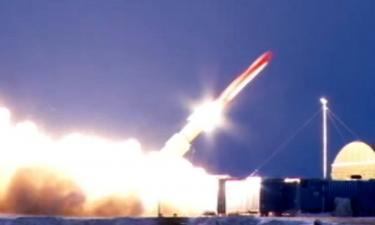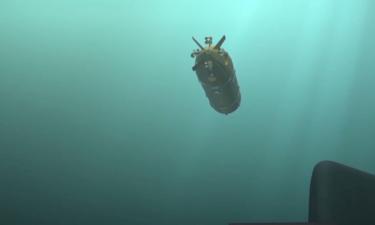Russia No Longer Needs Aircraft-Carriers
Navy Commander-in-Chief, Admiral Vladimir Kuroyedov says that Russia gives up production of bigger class vessels so typical of the Soviet epoch
The RF Defense Ministry has developed a plan of the Navy development for the period till 2040-2050, Gazeta reports. Basic theses of the plan are disavowal of protection of Russia's interests in oceans and consequently switching to production of smaller vessels navigating within the limits of 500-meters territorial waters zone.
Navy Commander-in-Chief, Admiral Vladimir Kuroyedov says that Russia gives up production of bigger class vessels so typical of the Soviet epoch and switches to production of multi-purpose vessels. According to the Navy commander-in-chief, Russia will have unique frigates and corvettes of its own. He adds that it is too early today to speak about aircraft-carriers - the issue will be topical within the next ten years only. However, Russia will not sell or decommission its only aircraft-carrier "Admiral Kuznetsov".
Director of the Center for Strategy Analysis and Technologies Ruslan Pukhov said in an interview to Gazeta that the Navy will have to get rid of the vessel as well. He says: "If the Navy needs the aircraft-carrier so much, it should be repaired and used in campaigns. Today, the only purpose of "Admiral Kuznetsov" existence is to give job to navy pilots, which seems to be too expensive indeed."
The Center director adds that there are only 12 navy pilots in Russia; training of younger pilots would be more advantageous abroad, at Ukraine's aerodrome in Saki or on "Admiral Gorshkov" aircraft-carrier recently sold to India. Ruslan Pukhov thinks that if "Admiral Kuznetsov" is sold training of younger pilots could be started within the nearest years, as "Admiral Gorshkov" needs repairing that will take four years.
In fact, today the condition of "Admiral Kuznetsov" is not perfect as well. The vessel was launched in 1989 and requires thorough repairs. As of now, the aircraft-carrier stays at the Sevmorput shipyard. When the vessel was sent for 4-day sea trials, it immediately went to the bottom.
The expert adds that production of Russian aircraft-carriers is out of question within the nearest 15 years; it is more advantageous to build new frigates and corvettes at the cost of $100 and $500 millions correspondingly.
This year, Russia is to give up the legendary military base located in the Vietnamese Bay of Cam Ranh that has been used within 20 years. When speaking about the loss, admirals and generals have deep sighs: indeed, the Navy will thus have its only point of logistical support located in Syria. So, Russia is losing the symbols of the empire's bygone might. Hitler mounted Siegfried statues along the Third Reich boundary. Russian bases, the naval ones in particular, performed the same role.
It is often said that Soviet leader Joseph Stalin carried the war constantly referring to the globe. But as seen from the position of military bases abroad, this statement more concerns Stalin's followers. After WWII, the USSR had naval bases in Cuba, Somalia, Ethiopia, Vietnam, Poland, Germany and Yemen. Soviet seamen could be seen in any part of the world.
In different periods, the Soviet Navy had naval bases in Cuba (Cienfuegos), Poland (Swinomunde), Germany (Rostok), Finland (Porkkala-Udd), Somalia (Berbera), Vietman (Cam Ranh), Syria (Tartus), Yemen (Hodeida), Ethiopia (Nokra), Egypt and Lybia. Today, the might of the Soviet empire is gone. The Russian Navy has only two signal office centers outside the country - Vileiki in Belarus and Bishkek in Kyrgyzstan, one logistical support base Tartus in Syria and one military base in Kant (Kyrgyzstan).
The Iraqi war has once again demonstrated that technical superiority of one of the sides guarantees success. Thus a conclusion can be made that Russian military technique will hardly do for modern wars. Otherwise, Saddam would have still stayed on the presidential post in Iraq. The national tank corps used to consist of 63 thousand machines and kept Europe and Asia in awe (the general staff said that Soviet troops could reach the English Channel or the Yellow Sea with the tanks). Today, the fleet has considerably reduced (it makes up 20,000 tanks) and is much weaker for repulsion of the aggression. At that, the RF Ministry of Defense states that only every fifth tank of the fleet meets the present-day requirements. These are mostly engineering developments of the 1970-80s, the outdated models T-72 and T-80. The Nezavisimaya Gazeta newspaper reports that during the Iraqi campaign Baghdad counted on these tanks most of all.
Unfortunately, when we speak about modern Russian tanks we mean models produced at least ten years ago. Within this period, the Ministry of Defense has ordered just few dozens of T-90 tanks, the amount that can hardly change the situation in the tank corps. The Ministry of Defense does not plan to purchase new tanks in the nearest time at all.
The situation is that unfavorable in the aviation and submarine fleet as well. Much has been recently said about arms modernization, and Rosoboronexport demonstrates lots of new models at arms exhibitions. However, the situation still remains the same.
Subscribe to Pravda.Ru Telegram channel, Facebook, RSS!



